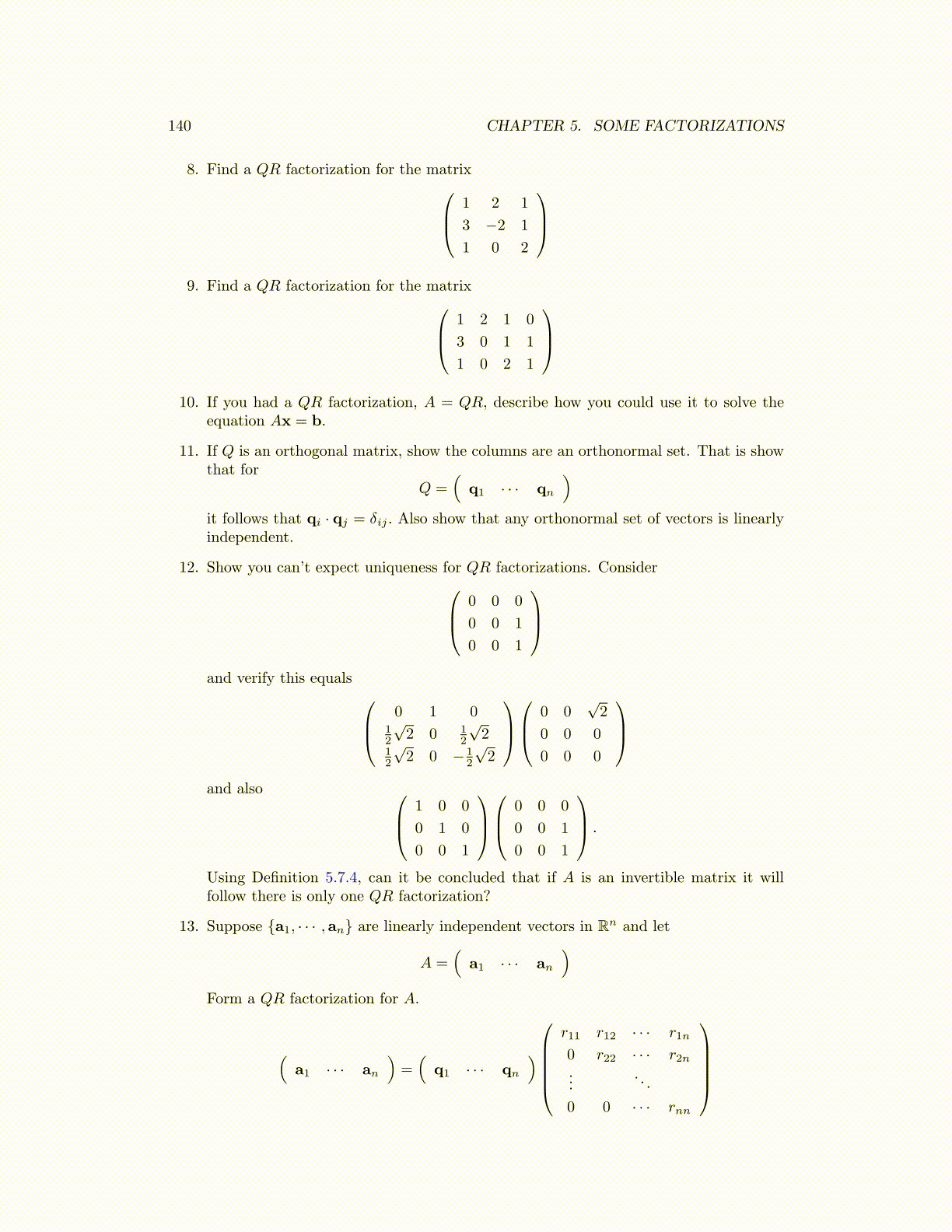
140 CHAPTER 5. SOME FACTORIZATIONS
8. Find a QR factorization for the matrix 1 2 1
3 −2 1
1 0 2
9. Find a QR factorization for the matrix 1 2 1 0
3 0 1 1
1 0 2 1
10. If you had a QR factorization, A = QR, describe how you could use it to solve the
equation Ax = b.
11. If Q is an orthogonal matrix, show the columns are an orthonormal set. That is showthat for
Q =(
q1 · · · qn
)it follows that qi · qj = δij . Also show that any orthonormal set of vectors is linearlyindependent.
12. Show you can’t expect uniqueness for QR factorizations. Consider 0 0 0
0 0 1
0 0 1
and verify this equals 0 1 0
12
√2 0 1
2
√2
12
√2 0 − 1
2
√2
0 0
√2
0 0 0
0 0 0
and also 1 0 0
0 1 0
0 0 1
0 0 0
0 0 1
0 0 1
.
Using Definition 5.7.4, can it be concluded that if A is an invertible matrix it willfollow there is only one QR factorization?
13. Suppose {a1, · · · ,an} are linearly independent vectors in Rn and let
A =(
a1 · · · an
)Form a QR factorization for A.
(a1 · · · an
)=(
q1 · · · qn
)
r11 r12 · · · r1n
0 r22 · · · r2n...
. . .
0 0 · · · rnn